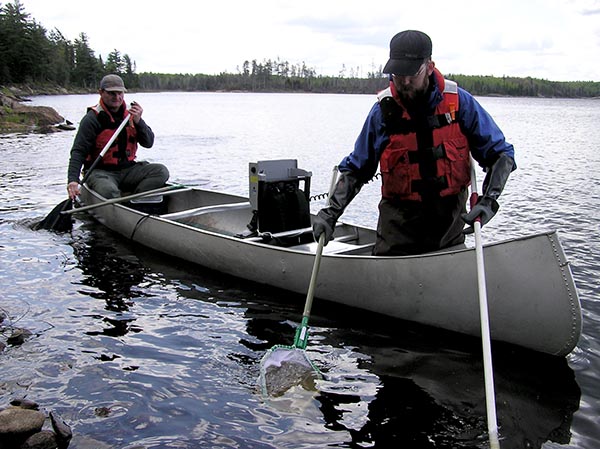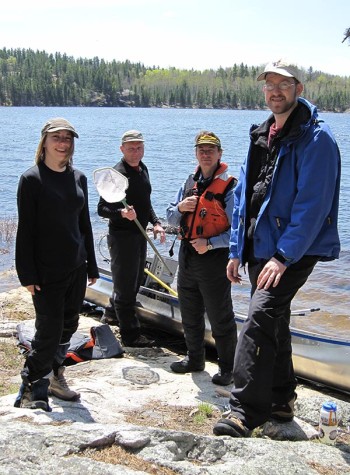Posted 2:32 p.m. Wednesday, July 2, 2014

Student researchers contributed to a long-term study that shows mercury levels have decreased in waters of the Minnesota Great Lakes Region.

From left, Mark Sandheinrich, head of UW-L’s River Studies Center, and Sean Bailey, ’03, a UW-L graduate student and independent contractor for USGS, dip their nets in the waters of Shoepack Lake.[/caption] UW-La Crosse student researchers contributed to a long-term study that shows mercury levels have decreased in waters of the Minnesota Great Lakes Region — a potential indicator that mercury pollution is on the decline. The study was a collaboration between UW-L, the U.S. Geological Survey, the National Park Service and the National Atmospheric Deposition Program. However, it couldn’t have happened without about 35 undergraduate and graduate UW-L students who’ve helped collect and analyze fish over the course of the study, says Mark Sandheinrich, head of UW-L’s River Studies Center and co-author of the study. Each year, a group of UW-L biology and chemistry students pack up their bug spray and fish nets to paddle through waters of Voyagers National Park. They collect small perch and northern pike to analyze for mercury contamination. Paul Drevnick, ’02, was one of those students more than a decade ago. He calls the opportunity a springboard into his career. Today he is a research scientist of aquatic ecology at the University of Michigan’s biological station. His research is about understanding mercury cycling in a changing world. As a UW-L graduate student in biology, he realized that in the future he could be working in places that appeared pristine, but were actually greatly affected by atmospheric contaminants, he says. “I’m still doing mercury research because it’s an interesting topic and also an important topic for human health,” he notes. Today Drevnick remains in close contact with his former UW-L mentors — Sandheinrich and Jim Wiener — who he now considers “lifelong friends and colleagues,” he says. [caption id="attachment_35158" align="alignright" width="350"]
 UW-L researchers and a Minnesota Pollution Control Agency staff member pictured at Voyagers National Park.[/caption]
UW-L researchers and a Minnesota Pollution Control Agency staff member pictured at Voyagers National Park.[/caption]
